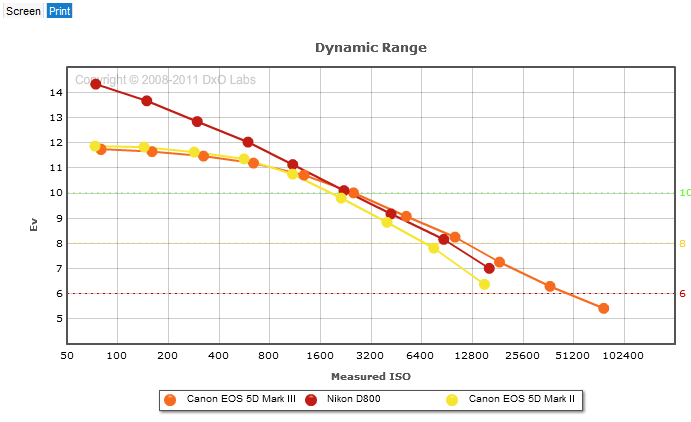I took DxOMark's
Dynamic Range plot, IMO the most useful since it shows noise performance in the deep shadows (where noise is really an issue), for every ISO value. Canon 5D3, 5D2 and Nikon D800 are compared:

Interpretation to whom may be interested:
At
base ISO (typical tripod or well lit applications):
- Both Canons perform the same, so no improvement in the new 5D3's sensor.
- Nikon D800 outperforms the Canons by more than 2 stops, this means deep shadows noise in the Canons is more than 4 times Nikon's level of noise (noise is doubled for every extra stop in the deep shadows). Translating this into a real case, for example in arquitecture or interiors, this may mean one shot is enough in the D800 and at least one extra shot is needed in the Canons in a reasonably high DR scene.
At
high ISO (typical handheld low light applications):
- Sony's sensor in the Nikon behaves as the
ISOless sensors found in the Pentax K5, Nikon D7000,... This means nearly 1 stop of DR is lost for every 1 stop ISO is pushed. It's almost not worth pushing ISO in order to get proper RAW exposure because noise improvement is minimal.
- Canons on the other side both behave as typical Canons, nearly maintaining their DR capability when pushing ISO, specially in the first steps 100->200, 200->400,... so it's critical in them pushing ISO as soon as RAW underexposure can take place at base ISO.
- The result is that from ISO1600 there is no winner between the D800 and the 5D3, which means a slight improvement over the 5D2.
IMO Canon must improve its DR at base ISO, or they will suffer in the mid/long term against the competition. More than 2 stops is a huge advantage for tripod photographers!.
Regards